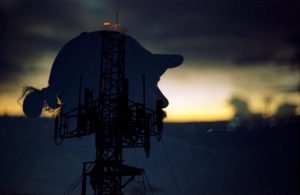
Starlink: Revolutionizing Global Internet Connectivity with Satellite Technology
Starlink is a satellite constellation developed by SpaceX, a private aerospace manufacturer and space transport services company founded by Elon Musk. The project aims to provide high-speed, low-latency internet connectivity across the globe, especially in areas where traditional fiber-optic cables are not feasible or available. With the launch of its first batch of satellites in 2019, Starlink has been steadily expanding its constellation, with over 2,000 satellites currently in orbit.
The idea behind Starlink is to create a network of low-Earth orbit (LEO) satellites that can provide internet connectivity to any location on the planet. Each satellite is equipped with a phased array antenna and a high-gain antenna, which enables it to communicate with user terminals on the ground and other satellites in the constellation. The satellites are designed to be small, weighing around 227 kilograms, and are built using a modular design, which allows for easy maintenance and upgrade.
How Starlink Works
Starlink uses a combination of advanced technologies to provide fast and reliable internet connectivity. The satellites in the constellation communicate with each other using laser links, which enable them to transfer data at speeds of up to 10 Gbps. The satellites also use advanced beamforming and beam-steering technologies to direct their signals towards specific areas on the ground, minimizing interference and increasing the signal strength.
The user terminals, which are small, flat devices that can be mounted on a roof or a wall, communicate with the satellites using radio waves. The terminals use advanced signal processing algorithms to detect and decode the signals transmitted by the satellites, providing a high-speed internet connection to the user. The terminals are also equipped with GPS and other sensors, which enable them to determine their location and adjust their signal transmission accordingly.
Benefits and Applications of Starlink
Starlink has the potential to revolutionize the way we access the internet, providing fast, reliable, and affordable connectivity to people and communities around the world. The benefits of Starlink are numerous, including:
Global coverage: Starlink can provide internet connectivity to any location on the planet, regardless of the availability of traditional infrastructure. This makes it an ideal solution for remote or underserved communities, as well as for emergency response and disaster relief efforts.
High-speed connectivity: Starlink can provide internet speeds of up to 1 Gbps, which is comparable to the speeds offered by traditional fiber-optic cables. This makes it an attractive option for applications that require high-bandwidth, such as online gaming, video streaming, and cloud computing.
Low latency: Starlink’s satellites are in low-Earth orbit, which means that the signals have to travel a shorter distance to reach the user terminals. This results in lower latency, which is critical for applications that require real-time communication, such as online gaming and video conferencing.
Affordability: Starlink aims to provide internet connectivity at a lower cost than traditional satellite internet services. The user terminals are designed to be affordable, and the company plans to offer a range of pricing plans to suit different needs and budgets.
Challenges and Limitations of Starlink
While Starlink has the potential to revolutionize the way we access the internet, there are several challenges and limitations that need to be addressed. These include:
Regulatory hurdles: Starlink needs to comply with a range of regulatory requirements, including those related to spectrum allocation, licensing, and environmental impact. The company has already faced opposition from some regulators and industry players, who are concerned about the potential impact of the constellation on the environment and the existing satellite infrastructure.
Interference and congestion: The launch of thousands of satellites into low-Earth orbit has raised concerns about interference and congestion. The satellites need to operate on a limited range of frequencies, which can lead to interference with other satellites and ground-based systems. The company needs to develop strategies to mitigate these effects and ensure that the constellation operates smoothly and efficiently.
Security: Starlink’s satellites and user terminals need to be secure to prevent hacking and cyber attacks. The company has already taken steps to address these concerns, including the use of advanced encryption and secure communication protocols.




